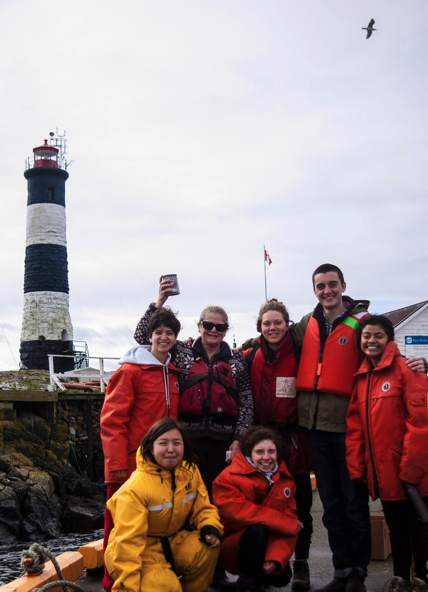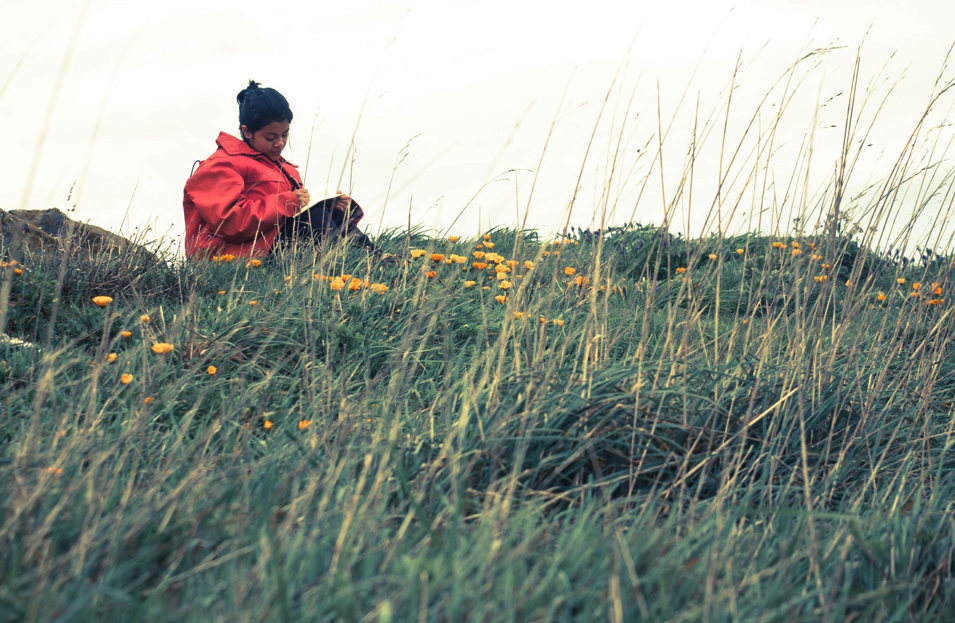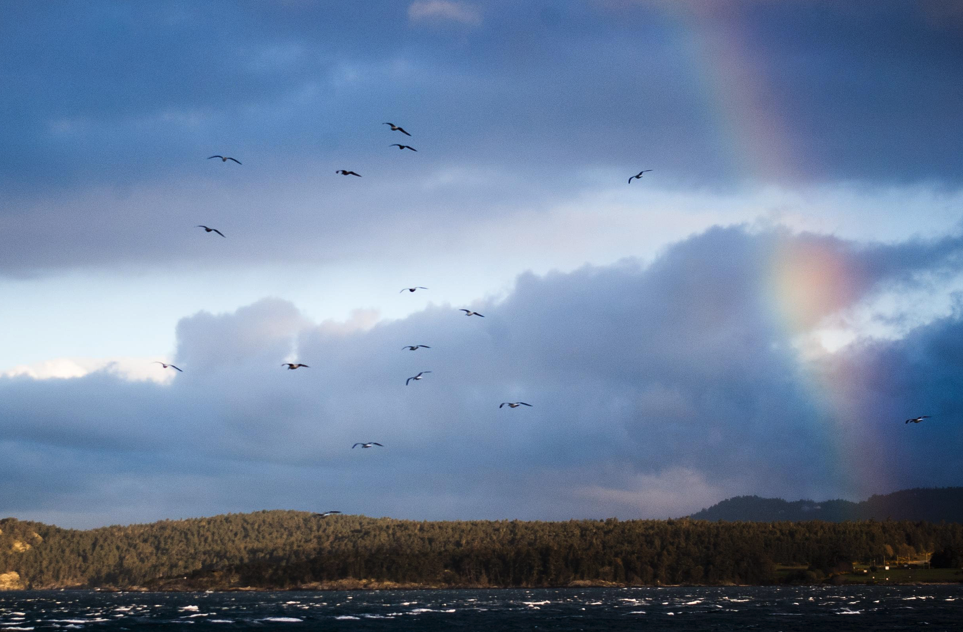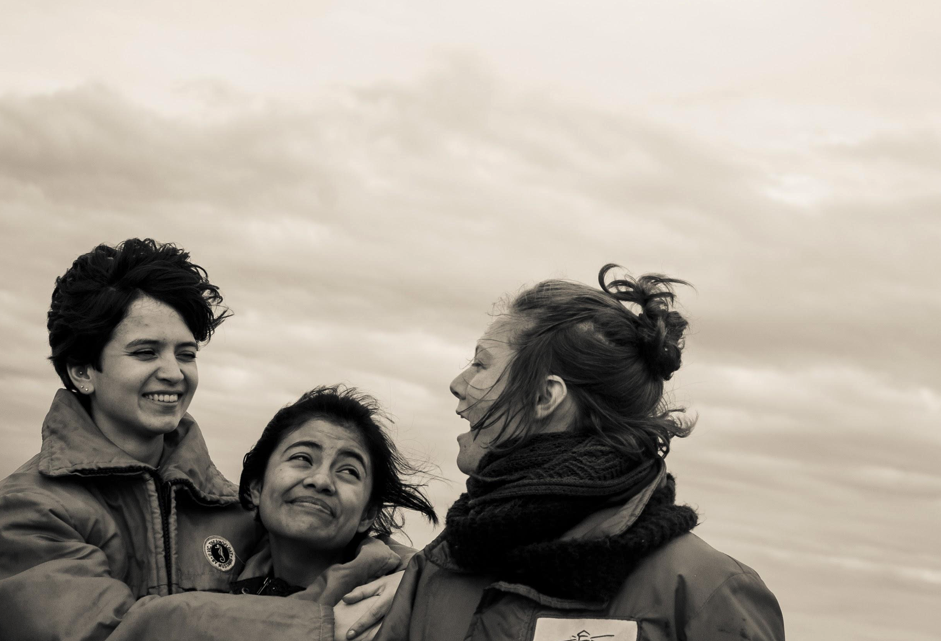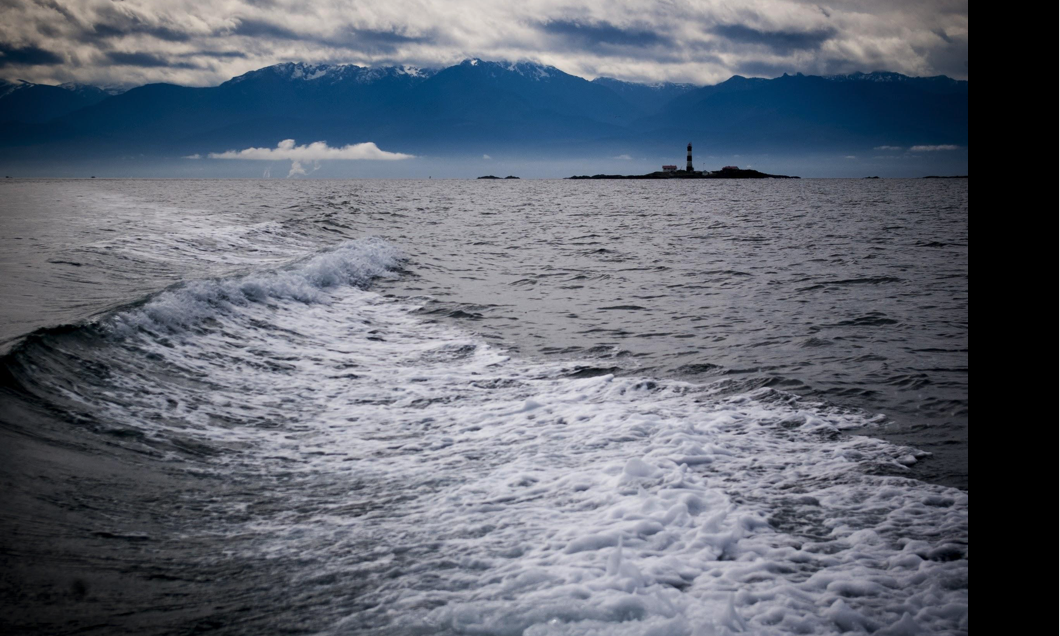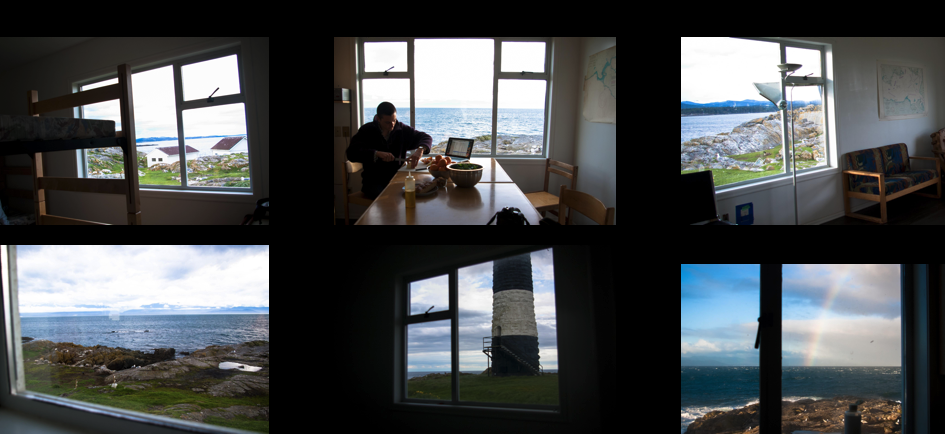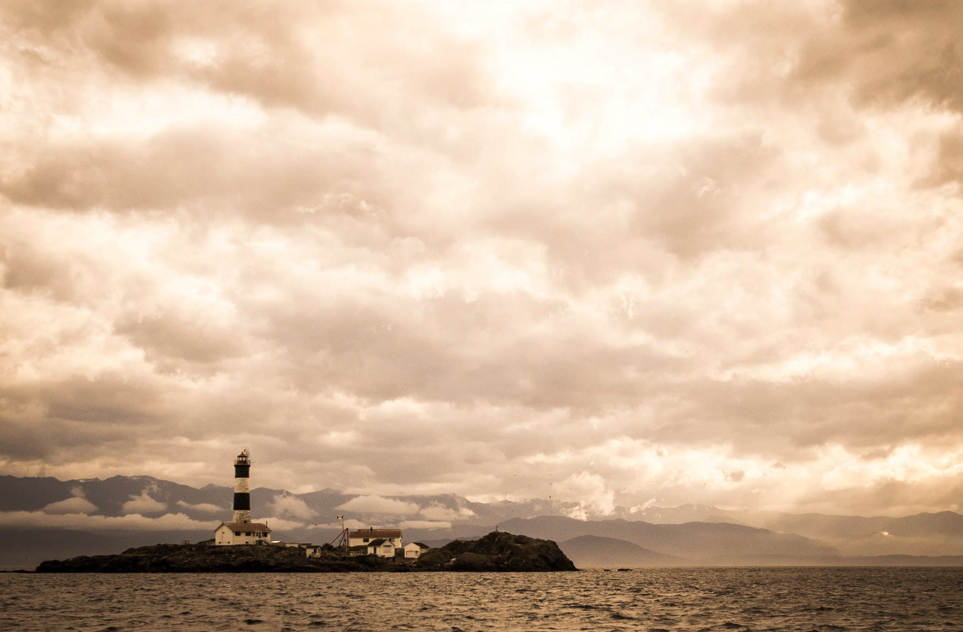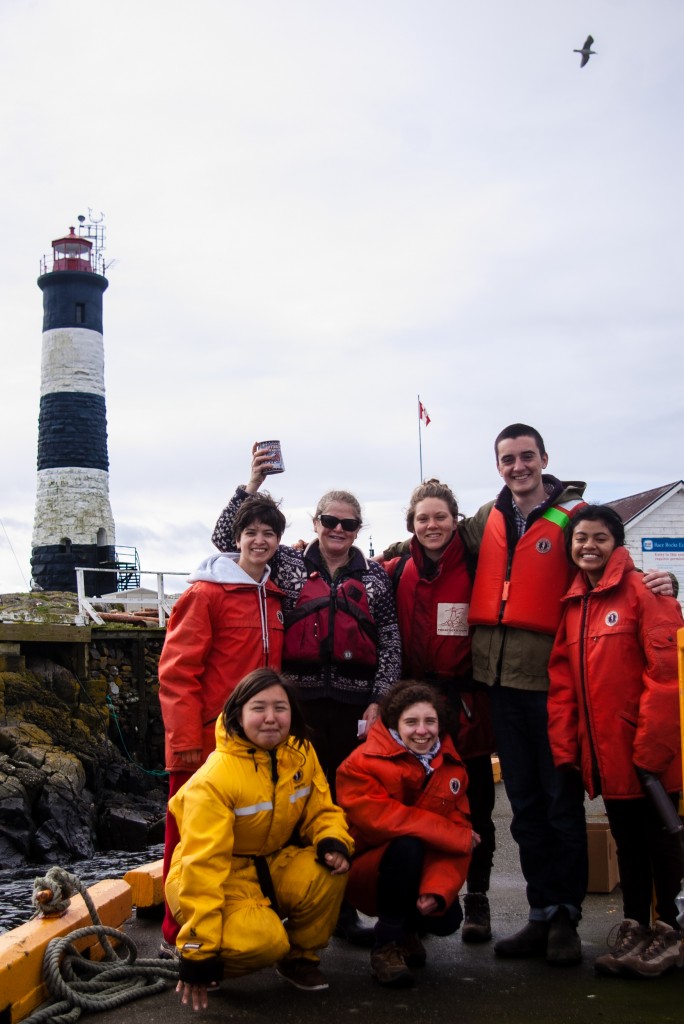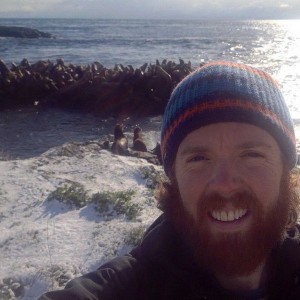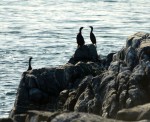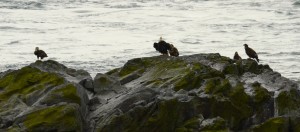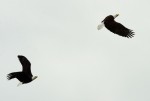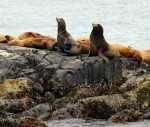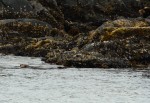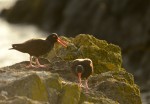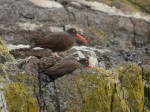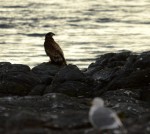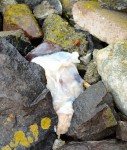The weather at Race Rocks was spectacularly uneventful today. The barometer creeped down, little by little all day, to end not much lower than it started, at 2018 hPa. The sky was overcast with a bit of drizzle from time to time. Winds were light and at ground level the wind never got over 10 km/hr. The whole thing fizzled out into a patchy fog as darkness fell.
I didn’t see any tour boats in the Ecological Reserve today other than the Dive Boat from Ogden Point. There were plenty of sport-fishers, but all outside the reserve, trying to catch halibut. The currents are so strong here that they have to anchor to fish a specific spot and it looks like it can be challenging.
There were over 100 Pigeon Guillemots here today and it was a treat to watch them in their new, bright plumage as they bobbed and dove in the currents. The Glaucous-winged gulls are also looking very dapper in their new feathers and they seem to be spending a lot of time head dipping and bill raising and generally shuffling around looking like they are biding their time for the perfect alignment of day length and the Milky Way for nesting. Bald Eagles, two adults and sub-adult were hunting on Great Race today and they would make the gulls all lift off from time to time. That was the big excitement of the day. It was generally just a blissful sort of day.
My student visitors left in the late morning, picked up by Chris Blondeau in Second Nature. It was such a treat to have them on the island for my first few days. I felt lucky to have such an auspicious start. These students may be humble but they are really very special. I found out during our safety briefing that the five young ladies from Greenland, Guatemala, Quebec and young man from New Brunswick, were collectively trained as fire fighters, first-aid responders and counsellors, as part of their duties at Pearson College. These young people have my respect and are really using education as “a force to unite people, nations and cultures for peace and a sustainable future.” When I asked them what made their stay on the rock special and why it should be maintained as part of Pearson College, they mentioned things like peacefulness, quiet, nature, hopefulness, the importance of the marine protected area. They also said how great it is to just get away and how lucky they felt, to be able to come to such a special and beautiful place.
As we said our goodbyes on the jetty, they presented me with a hand-drawn thank you card and a can of Maple Syrup from Quebec. How sweet! There is something about Maple Syrup that is beyond delicious.
I did the regular chores today, getting back into the routine of spot checks, VHF monitoring, seawater sampling, washing solar panels, clearing walkways, running the generator and generally fighting entropy. I also managed to clear a few pernicious, waterlogged chunks of wood that were blocking the marine railway, which was really satisfying. It was fun to use the pee-vee and pike pole and I managed to stay mostly dry.

